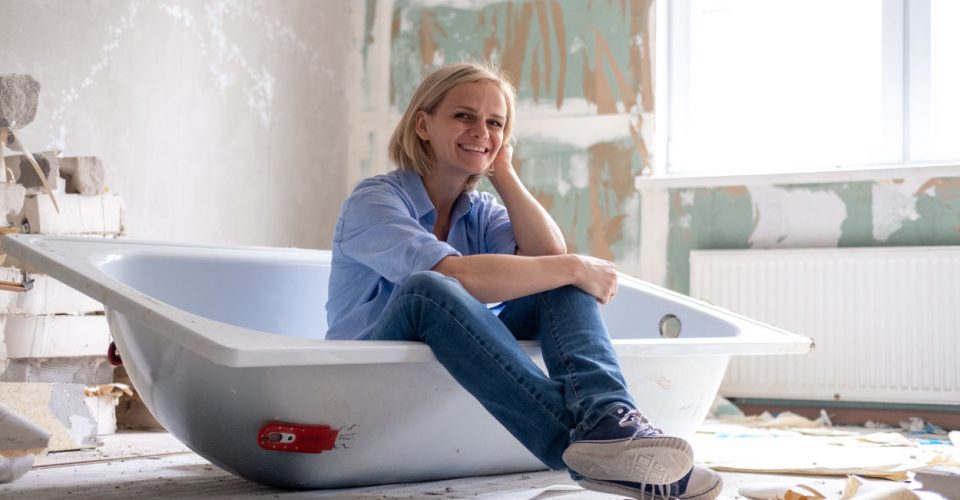A Step-by-step Bathroom Renovation Guide
Renovating a bathroom has always been overwhelming. Preparing a proper checklist will help you remodel your bathroom without missing anything out, whilst making the overall experience less stressful and cost-effective as there will be no mistakes.

Planning bathroom renovations
Every bathroom renovation will vary greatly. Each with its own unique context from its design to layout and unknown complexities. Whether you’re opting for a simple refresh or complete rip-out and re-do having a carefully considered plan of action will help.
Step 1
Brainstorming and idea gathering. First, you’ll need to know what you want so you’ll have to do your research. There are a plethora of resources for bathrooms across the internet from standard ones to the wild and wonderfully unique ones.
Social Media platforms such as Facebook, Instagram and Pinterest are great places to go for creative ideas. Once you’ve started remember to shortlist your photos and ideas to refer back to and make sure you’ve covered all the basic design elements in your research; Colour schemes, finishes and styles.
Step 2
Decide what you’re going to do. You’ll want to determine which changes you’re going to make and the scope of the project, whether it’s swapping a few fixtures and fittings or going the whole hog and tearing your bathroom out to start from scratch.
Depending on what you’re doing will determine, or be determined by, a few key things that need to be considered. Firstly, your budget and how much you have to spend and secondly, the time it will take to complete.
Basic changes like swapping fixtures and fittings such as the sink or shower mixer will be relatively cheap and quick. Something like re-flooring or retiling the entire room will naturally cost more and take a lot longer.
Step 3
The next major decision in the process is to think about whether you’ll be undertaking the project yourself or getting the trades in to do it for you. We would always recommend the later, this way you’ll have access to their industry knowledge and specialised skill sets such as discounts with suppliers and the know-how when it comes to planning permissions and building regulations which you may need.
Step 4
This step is a big one but can’t be fully determined until you’ve thought carefully about the previous steps. That’s the budget! Once you know what you want, how you want it done and who’s doing it you’ll be able to figure out how much it’s going to cost.
You can utilise companies offering a bathroom remodelling estimation service to give you a better idea. Your project plan should include all the costs you’ll need to cover from materials, tradesmen labour and building control fees if the project requires them.
Sometimes however this step may come first and be the limiting factor and act as a constraint on the rest of the steps.
Step 5
Depending on what you’re doing with your bathroom renovation you may be looking at needing structural alterations to the property. If that’s the case you’ll need planning permission, building regulations and a structural engineer report. If you’re planning on doing the job yourself these are things you’ll need to organise yourself and allow ample time for each stage.
Other Considerations
There are a few other things you’ll want to consider when actually planning your bathroom and not doing these properly could be a costly mistake.
- Measuring up: Make sure you measure up properly when designing your bathroom. You don’t want to end up with gaps or a cramped room at the end of the project, let alone having to re-buy materials or redo work.
- Double check your connections: This goes for electricity, which should be minimal in the bathroom but more importantly plumbing. You don’t want any leaks as this will cause water damage further on down the line.
- Back up bathroom: If you’ve got another bathroom, no worries. If you only have one bathroom you’ll either want to stage work where you won’t be left with a toilet or shower for long periods of time or find somewhere where you can use the bathroom.
- Plan for the unforeseen: Mistakes happen, it’s a fact of life but that doesn’t mean you can’t be prepared for them. You may have a situation where you thought you’d only be replacing a shower but once you’ve started the scope of the project may widen and need you to undertake other jobs. If you find yourself having to pull up the floor when you didn’t plan for it, it could blow your budget. The best thing to do is plan the what ifs, that’s where accurate flooring takeoffs are beneficial.
There’s no doubt that bathroom renovations can be a nightmare of a project, to avoid this for your project you’ll want to attentive and carefully plan each phase of the project until it’s completion.

